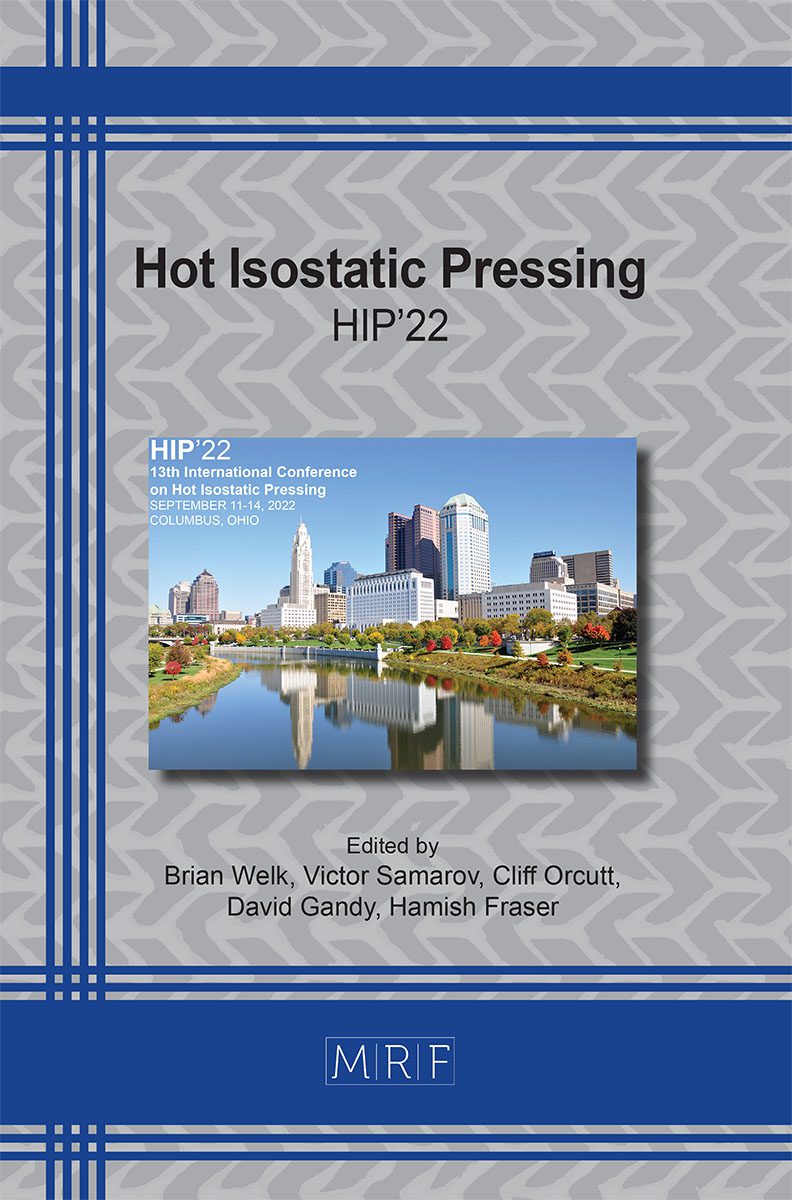Powder Metallurgy HIP and Extrusion Study of FeCrAl Alloy for Accident Tolerant Fuel Cladding
Shenyan Huang, Evan Dolley, Steve Buresh, Ian Spinelli, Jason Leszczewicz, Marija Drobnjak, Mike Knussman, Raul B. Rebak
download PDFAbstract. Powder metallurgy HIP and extrusion processing conditions were investigated in a FeCrAl alloy (Fe-Cr-Al-Mo based PM-C26M) for accident tolerant fuel cladding applications. The powder size range, HIP temperature (900 ~ 1100°C), HIP time (2 hours vs. 4 hours) were varied in lab-scale experiments, using argon gas atomized powder. The resulting density, grain size distribution, and retained plastic strain were characterized to recommend the HIP condition with full consolidation, fine grain size for formability, and good powder economics. The subsequent extrusion process was also studied in the temperature range of 950 ~ 1050°C as well as post annealing conditions. Based on the microstructure evaluation, sensitivity of HIP and extrusion process parameters were better understood.
Keywords
FeCrAl, Accident Tolerant Fuel, Nuclear Materials, Powder Metallurgy, HIP
Published online 12/8/2023, 6 pages
Copyright © 2023 by the author(s)
Published under license by Materials Research Forum LLC., Millersville PA, USA
Citation: Shenyan Huang, Evan Dolley, Steve Buresh, Ian Spinelli, Jason Leszczewicz, Marija Drobnjak, Mike Knussman, Raul B. Rebak, Powder Metallurgy HIP and Extrusion Study of FeCrAl Alloy for Accident Tolerant Fuel Cladding, Materials Research Proceedings, Vol. 38, pp 107-112, 2023
DOI: https://doi.org/10.21741/9781644902837-16
The article was published as article 16 of the book Hot Isostatic Pressing
![]() Content from this work may be used under the terms of the Creative Commons Attribution 3.0 license. Any further distribution of this work must maintain attribution to the author(s) and the title of the work, journal citation and DOI.
Content from this work may be used under the terms of the Creative Commons Attribution 3.0 license. Any further distribution of this work must maintain attribution to the author(s) and the title of the work, journal citation and DOI.
References
[1] K. A. Terrani, Accident tolerant fuel cladding development: Promise, status, and challenges, Journal of Nuclear Materials, Vol. 501, (2018) 13-30. https://doi.org/10.1016/j.jnucmat.2017.12.043
[2] K. G. Field and S. A. Briggs (2020), “Radiation Effects in FeCrAl Alloys for Nuclear Power Applications,” Elsevier Comprehensive Nuclear Materials 2nd edition, Vol. 3. https://doi.org/10.1016/B978-0-12-803581-8.11613-3
[3] R. B. Rebak, Accident Tolerant Materials for LWR Fuels, Elsevier, 2020.
[4] S. Huang, E. Dolley, K. An, D. Yu, C. Crawford, M. A. Othon, I. Spinelli, M. P. Knussman, and R.B. Rebak (2022), “Microstructure and tensile behavior of powder metallurgy FeCrAl accident tolerant fuel cladding,” Journal of Nuclear Materials 560 (2022) 153524. https://doi.org/10.1016/j.jnucmat.2022.153524
[5] R. B. Rebak, T. B. Jurewicz, M. Larsen, L. Yin, Zinc water chemistry reduces dissolution of FeCrAl for nuclear fuel cladding, Corrosion Science, Vol. 198 (2022) 110156. https://doi.org/10.1016/j.corsci.2022.110156












